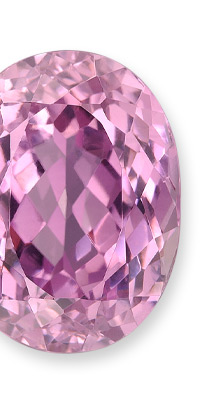
Kunzite
With fashion always in the mood to think pink, Kunzite is a fashion favourite. Affordable and available in large sizes, this icy pink to lilac gem is a perfect complement to all the pastels in your wardrobe and also stunning against black.
Surprisingly Kunzite was discovered in the United States, early in the twentieth century. Even its name has American roots: t his pink gem variety of the mineral spodumene is named in tribute to George Kunz, the legendary gem scholar, gemologist, and gem buyer for Tiffany & Co at the turn of the century. The author of The Curious Lore of Precious Stones, Kunz searched the globe for old stories and legends about gems as he searched for new varieties and new deposits.
Kunzite was first found in Connecticut, USA. But the first commercially significant deposit was discovered in 1902 in the Pala region of California, where morganite beryl was also first discovered. The name was a brilliant marketing move: the miners named the gem after its most likely customer, Kunz. Morganite was named for the customer’s customer: J.P. Morgan.
Today most kunzite is mined in Brazil, Afghanistan, and Madagascar. Kunzite is often found in association with morganite and pink tourmaline, the other popular pink gemstones.
The largest faceted kunzite is an 880-specimen on display at the Smithsonian Institute in Washington D.C. Although kunzite for jewellery use is several levels of magnitude smaller, kunzite shows the best colour in larger sizes. Stones should be at least ten carats to be really in the pink.
Kunzite is relatively hard, with a hardness of seven just like quartz. However, kunzite should be handled with care because, like diamond, it has a distinct cleavage. A sharp blow, if it lands in the wrong place, can break it in two. Kunzite should also be protected from heat and continued exposure to strong light, which may gradually fade its colour. Clean with mild dish soap: use a toothbrush to scrub behind the stone where dust can collect.

